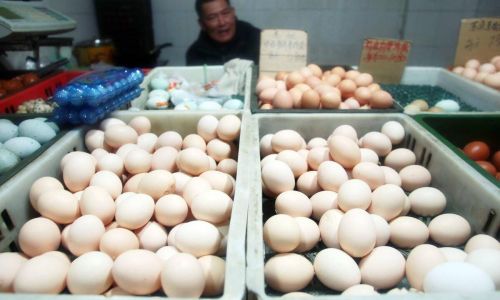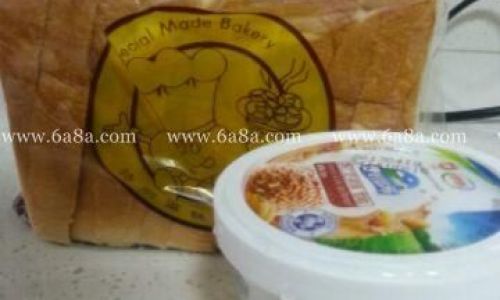Introduction
The transportation of fresh duck eggs from farms to markets, restaurants, or directly to consumers’ doorsteps presents unique challenges, particularly when it comes to maintaining their freshness and quality during the shipping process. Unlike other perishable goods, eggs require careful handling to prevent cracking, control temperature, and minimize exposure to potential contaminants. This comprehensive guide explores the intricacies of shipping fresh duck eggs via express delivery, focusing on preservation techniques that ensure the eggs arrive in optimal condition.
Understanding the Perishability of Duck Eggs
Duck eggs, like chicken eggs, are highly perishable and sensitive to changes in temperature and humidity. Freshness is crucial as it directly impacts the taste, texture, and nutritional value of the egg. The shelf life of a duck egg, when stored properly at refrigerated temperatures, is generally around 3-4 weeks. However, during transportation, this window narrows due to the stress of handling and potential exposure to adverse conditions.

Pre-Shipping Preparations
-
Egg Collection and Sorting
- Timing is Key: Collect eggs immediately after they are laid to minimize the time they spend in warm, potentially bacteria-laden environments.
- Inspection: Carefully inspect each egg for cracks, thin shells, or other imperfections that could compromise its integrity during shipping.
- Grading: Sort eggs by size and quality to ensure uniform packaging and reduce the likelihood of damage.
-
Cleaning and Sanitization
- Gentle Cleaning: Use warm water and a mild detergent to clean the eggshells, taking care not to scrub too hard as this can damage the protective bloom (a natural coating that helps prevent bacteria from penetrating the shell).
- Drying: Thoroughly dry the eggs with a clean, soft cloth to avoid moisture accumulation, which can promote bacterial growth.
- Sanitization: Consider using a food-safe sanitizer to further reduce the risk of contamination.
-
Temperature Control
- Refrigeration: Store eggs in a refrigerator at a temperature of around 4°C (39.2°F) until they are ready for packaging. This slows down bacterial growth and preserves freshness.
Packaging for Shipping
-
Choosing the Right Materials
- Egg Cartons: Use specially designed egg cartons made from sturdy, moisture-resistant material. Each compartment should fit snugly around the egg to prevent movement and reduce the risk of cracking.
- Insulation: Incorporate thermal insulation materials such as foam, gel packs, or reusable ice packs to maintain a consistent temperature during transit.
- Moisture-Proof Bags: Enclose the eggs in moisture-proof bags or wraps to prevent condensation from forming inside the packaging, which could lead to mold or bacterial growth.
-
Layering and Protection
- Cushioning: Place layers of bubble wrap, foam peanuts, or crumpled paper between the egg carton and the outer packaging to absorb shock and protect against impacts.
- Secure Sealing: Use strong, tamper-evident tape to seal the packaging securely, ensuring that it cannot be easily opened or damaged during handling.
-
Labeling and Documentation
- Fragile Labels: Clearly mark the package as “Fragile” and “Handle with Care” to alert couriers to the need for gentle handling.
- Temperature-Controlled Labels: If using a temperature-controlled shipping service, include labels indicating the required temperature range.
- Shipping Documents: Attach detailed shipping documents, including the recipient’s contact information, a delivery address, and any special instructions for handling.
Choosing the Right Shipping Method

-
Express Delivery Services
- Speed: Express delivery services offer faster transit times, reducing the duration the eggs are exposed to potentially harmful conditions.
- Temperature-Controlled Options: Many express delivery companies offer temperature-controlled shipping options specifically designed for perishable goods.
- Tracking and Monitoring: Utilize tracking services to monitor the shipment’s progress and ensure it arrives on time.
-
Cold Chain Logistics
- Refrigerated Vans and Containers: For larger shipments, consider using refrigerated vans or containers to maintain a consistent temperature throughout the journey.
- Cold Chain Management: Partner with logistics providers that specialize in cold chain management to ensure seamless temperature control from farm to destination.
In-Transit Considerations
-
Temperature Monitoring
- Data Loggers: Use temperature data loggers to continuously monitor and record the temperature inside the packaging. This provides valuable insights into any temperature excursions that may have occurred during transit.
- Alerts and Notifications: Set up alerts to receive notifications if the temperature falls outside the acceptable range, allowing for prompt corrective action.
-
Handling Protocols
- Courier Training: Ensure that couriers are trained in the proper handling of perishable goods, including the importance of maintaining cold chain integrity and avoiding rough handling.
- Priority Handling: Request priority handling for perishable shipments to minimize delays and exposure to adverse conditions.
Post-Arrival Handling
-
Immediate Refrigeration
- Upon arrival, quickly transfer the eggs to a refrigerator to maintain their freshness.
- Check the temperature data logger to confirm that the eggs were maintained within the required temperature range during transit.
-
Quality Control
- Conduct a visual inspection of the eggs to ensure there are no cracks or signs of damage.
- Discard any eggs that appear discolored, have an off odor, or show other signs of spoilage.
-
Storage Recommendations

- Store the eggs in the coldest part of the refrigerator, ideally on a middle shelf to avoid temperature fluctuations caused by the door opening.
- Use eggs within their recommended shelf life, prioritizing those that have been in storage the longest.
Conclusion
Shipping fresh duck eggs via express delivery requires meticulous planning, careful packaging, and stringent temperature control to ensure they arrive in optimal condition. By following the guidelines outlined in this guide, from pre-shipping preparations to post-arrival handling, businesses and individuals can successfully transport duck eggs while preserving their freshness and quality.
Innovations in Egg Transportation
As technology advances, so too do the methods available for transporting perishable goods like duck eggs. Here are some emerging trends and innovations that are shaping the future of egg transportation:
-
Smart Packaging
- Integrated Sensors: Smart packaging with integrated sensors that monitor temperature, humidity, and shock can provide real-time data on the condition of the eggs during transit.
- Self-Regulating Insulation: Advanced insulation materials that can adjust their thermal properties in response to environmental changes, ensuring consistent temperature control.
-
Alternative Shipping Methods
- Drone Deliveries: For short-distance shipments, drones offer a rapid and efficient way to transport perishable goods, bypassing traditional transportation networks and reducing delivery times.
- Vacuum-Packed Eggs: Techniques such as vacuum packaging can extend the shelf life of eggs by removing oxygen, which slows down bacterial growth.
-
Sustainable Practices
- Eco-Friendly Packaging: The use of biodegradable or reusable packaging materials reduces waste and environmental impact.
- Cold Chain Optimization: Innovations in cold chain logistics, such as more efficient refrigeration systems and route optimization algorithms, reduce energy consumption and carbon emissions.
Challenges and Solutions
Despite advancements in transportation technology, several challenges remain in shipping fresh duck eggs:

-
Temperature Fluctuations
- Challenge: Maintaining a consistent temperature throughout the shipping process is difficult, especially during transit through different climates and geographic zones.
- Solution: Investing in high-quality thermal insulation materials and temperature-controlled shipping containers can help mitigate temperature fluctuations.
-
Handling and Damage
- Challenge: Rough handling during transit can lead to cracked or broken eggs.
- Solution: Improved packaging designs, such as shock-absorbent materials and custom-molded egg cartons, can reduce the risk of damage.
-
Regulatory Compliance
- Challenge: Different countries and regions have varying regulations for the transportation of perishable goods.
- Solution: Staying informed about and complying with local regulations is crucial. This may involve obtaining special permits, using approved packaging materials, and adhering to specific labeling requirements.
Future Prospects
As the global demand for fresh, high-quality eggs continues to grow, so too will the need for innovative transportation solutions. Advances in packaging technology, cold chain logistics, and alternative shipping methods will play a pivotal role in meeting this demand while minimizing environmental impact. By embracing these innovations, businesses can ensure that fresh duck eggs are accessible to consumers worldwide, regardless of distance or location.
In conclusion, the successful transportation of fresh duck eggs via express delivery hinges on meticulous planning, careful packaging, and stringent temperature control. By staying informed about emerging trends and technologies, businesses can overcome the challenges associated with shipping perishable goods and deliver fresh, high-quality eggs to their customers. With continued innovation and commitment to sustainability, the future of egg transportation looks promising.





0 comments